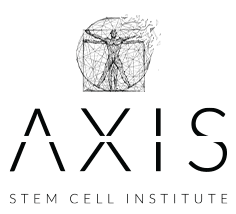
What are Musculoskeletal Conditions?
The musculoskeletal system includes tissues like muscles, tendons, ligaments, and joints, which are an important part of supporting your body and allowing it to move. If you’ve ever suffered an injury or have experienced pain in one of these areas, you know how large an effect it can have on your quality of life. Fortunately, stem cell therapies can be used to promote healing of degeneration and malformation of musculoskeletal tissues, as well as injuries and conditions that cause inflammation.
What Causes Musculoskeletal Conditions?
Conditions that affect the musculoskeletal system can happen for many different reasons. Most commonly, they occur as a result of injury or natural wear on important tissues over the course of a lifetime. Each person’s circumstances are unique, so we make sure that your personalized plan starts with a full understanding of your symptoms and possible causes.
What are Common Musculoskeletal Conditions?
Osteoarthritis
Osteoarthritis is sometimes called degenerative joint disease and is caused by a loss of joint cartilage over time. Normally, cartilage allows the bones of the joint to easily glide and move. When cartilage and other soft tissues break down, the bones move against each other and the joint can become stiff, painful, and immobile. Without treatment, osteoarthritis can progress and cause greater discomfort and complications. Osteoarthritis may present with three characteristics: joint space narrowing, bone spurring and wearing away of cartilage. These characteristics create a “bone on bone” appearance, painful inflammation, and decreased range of motion and overall mobility. Causes for osteoarthritis can include prior surgery, previous trauma, wear and tear over time, and previous infections. Every time the joint sustains an injury or trauma, it causes an inflammatory process. This inflammation causes the cartilage to degenerate over time.
Standard treatments include anti-inflammatory medications, like ibuprofen or naproxen, which are temporary solutions for a long-term issue. Surgeons may also recommend joint replacement therapy, which can be very involved and risky and may not always provide pain relief and increased function. At AXIS stem cell institute, we want to provide a non-surgical solution to halt arthritis and prevent further destruction. After injection, stem cells will work to replace the lost cartilage and decrease inflammation.
Knee Pain and Meniscus Tears
The knees are an important part of your body’s posture and support system, especially when you live an active lifestyle. However, many people experience pain in the knees, especially if they are active or aging. Knee pain can have many different causes like osteoarthritis, meniscus tears, bursitis, or soft tissue injuries. These conditions are usually accompanied by chronic pain, swelling, and sensitivity, which can greatly limit your lifestyle.
Back Pain and Spinal Conditions
Many individuals have had unrelenting back pain for years stemming from conditions like degenerative disc disease, herniations, malalignment, or muscle spasms. This can significantly affect your day-to-day activity and quality of life, leading to a decrease in activity and overall health. Many patients feel that they have few options other than pain management and prescription drugs.
Hip Pain
Hip pain is a very common complaint and can be caused by degenerative processes, injuries, and other conditions. Degenerative conditions such as osteoarthritis are among the most common causes of hip pain and most often will continue to get worse with no treatment. Other common diseases affecting the hip joint include Malalignment, Rheumatoid arthritis, Septic arthritis, Sciatica, Inguinal hernia, Sacroiliitis, Osteoporosis, Osteomyelitis, Avascular necrosis, Legg-Calf-Perth disease, and Osteosarcoma as well as common injuries such as fractures, dislocations, or sprains. Bursitis is also common, which is a condition of inflammation of the fluid-filled bursa sac, which acts as a shock-absorber near the hip joint.
Stem Cell therapy works to initially halt this process in its tracks and decrease overall inflammation. Stem cells then regenerative lost cartilage and damaged tissues, providing less pain and more mobility. Bursitis can be treated by direct injection to heal the bursa and decrease inflammation allowing for subsequent pain relief.
Shoulder Pain
The shoulder joint is a very intricate structure and therefore is very susceptible to injury and a list of different medical conditions. Leading causes of shoulder pain include Osteoarthritis and rotator cuff injury. Rotator cuff injuries include the four muscles and subsequent tendons that comprise the supportive aspects of the shoulder and allow movement of the ball and socket joint. These muscles and tendons include the supraspinatus (most commonly injured) Infraspinatus, teres minor, and subscapularis. An injury to any of these structures may cause pain, limited range of motion, and inflammation. Special testing and imaging can help to identify your specific injury.
Other common causes of shoulder pain that are significant to the joint include (but are not limited to) Impingement, Bursitis, Dislocation, sprain, strain, fracture, brachial plexus injury, thoracic outlet syndrome, frozen shoulder, rheumatoid arthritis, septic joint, tendon rupture, tendonitis, and AC joint injury. Stem Cell therapy can be used to alleviate many of these conditions by encouraging the regeneration of tissues.
Ankle and Foot Pain
The ankle and foot are small components of the body that bear a large amount of force and wear. Injuries to the ankle and foot can be problematic not only for the joint injured but for the knee and hip joint as well due to poor alignment and mechanics when walking. This is typically due to compensation and will often cause issues with the entire kinetic chain of the lower body. Two of the most common causes of foot and ankle pain are osteoarthritis and ankle sprain. The presence of many small bones and joints in the ankle and foot so it can often make it susceptible to degeneration. This often results in calcification and pitting of the surface of these structures which leads to progressive damage of the joint. Other complications include strain, Achilles tendinitis, gout, Morton’s foot, plantar fasciitis, calcification, and poor circulation.
Stem Cell therapy works to initially halt this process in its tracks and decrease overall inflammation. Stem cells then regenerate lost cartilage and damaged tissues, providing less pain and more mobility. It is important to address foot and ankle injuries and pain as soon as possible to prevent further damage to the joints.
Sports Injuries
At Axis Stem Cell Institute, we take pride in providing Sports medicine to elite athletes all over the nation. Typically, there are two kinds of sports injuries: acute and chronic. An acute sports injury is one that happens suddenly with an immediate apparent injury to the affected joint, muscle, bone, or tissue, and negatively affects the range of motion. Chronic injuries often occur as a result of overuse or repetitive injury to the same area. Common sports injuries include concussions, sprains and strains as well as ACL and MCL rupture and tears, epicondylitis (tennis elbow), shin splints, fractures, and muscle tears.
Most athletes with injuries are eager to get back to competition and looking for safe and effective healing. Stem cells work to repair and regenerate damaged tissue to decrease healing time and increase longevity. In the case of concussions, stem cells are applied to the spinal fluid allowing direct travel to the brain in order to repair the damaged neurons and cerebral tissue.
Muscular Pain, Spasms, & Tears
Muscle spasming or cramping is when involuntary contractions occur on a small or large scale within your muscles. These contractions can cause pain that lasts a few seconds to a few minutes and can often time cause lasting knots within a muscle. Commonly affected areas include your back, legs, arms, and calves. There are many factors that can influence cramping, like dehydration, increased systemic inflammation, overuse, illness, and obesity.
Muscle pain can often be influenced by other factors including muscle tears, bruises, systemic inflammation, and overuse. Stem cells work well when directly injected into an injured or spasmodic muscle. Stem cells work to decrease inflammation at the local injection site and inhibit the contraction that is causing pain. Stem cells are often suspended in PRP, which is another excellent choice for muscular injuries. Platelet-rich plasma has been proven to have appropriate applications for therapy.
Elbow Pain
Many sports, jobs, and hobbies require repetitive hand, wrist, and arm movements, often making elbow pain chronic and caused by overuse. Elbow pain is occasionally caused by arthritis or inflammation due to injury, but generally speaking, the elbow is much less prone to wear and tear than other joints. Common causes of elbow pathology include medial and lateral epicondylitis and bursitis. Medial epicondylitis often referred to as golfers’ elbow occurs when the flexor tendon is under chronic inflammation causing pain and tenderness. On the other hand, lateral epicondylitis is referred to as tennis elbow, which is chronic inflammation to the extensor tendon due to overuse. Elbow bursitis, also referred to as olecranon bursitis, is characterized by swelling, inflammation, and pain in the fluid-filled bursa sac present in the elbow. This bursa sac acts as a cushion or shock absorber and often becomes irritated after overuse, direct trauma to the elbow, and infection. Other causes of elbow pain include dislocations, strains, sprains, nerve entrapment, and impingement.
Depending on the extent of the inflammation, PRP (platelet-rich plasma) can often be used to decrease inflammation in the area. For chronic more severe injuries over extensive time periods, stem cell therapy may be the right choice to repair damaged and inflamed tissue, allowing for an overall decrease in pain. PRP and stem cell therapy works to decrease inflammation and pain in the area while repairing and regenerating the injured tissue.
TMJ Pain and Dysfunction
The temporomandibular joint connects your mandible (jawbone) to your skull and acts as a hinge joint. This joint is present on both sides of the face in front of the ear and can be palpated when opening and closing the jaw. The TMJ can become painful when inflamed due to overuse and injury. Some patients are more prone to dysfunction if malalignment is present. Pain can range from mild to severe and can often significantly affect quality of life and the ability to chew. There are a few factors that can often contribute to this disorder, including arthritis, grinding of the teeth, stress, injuries to the jaw, and connective tissue disorders.
It’s important to take an in-depth look at why you are experiencing pain and what your options are. Often, sufferers of TMJ disorders are left with few choices including surgery, which can leave patients with residual daily pain. Stem cells can be placed into the TMJ by simple injection and are used to regenerate lost joint cartilage and decrease inflammation and pain. This can allow for less popping and discomfort with opening and closing the mouth.
Hands & Wrists Problems
The hands and wrists are delicate and relatively complex structures with dozens of small bones, making them particularly susceptible to injury or damage over time. We use our hands nearly constantly, and they are prone to injury due to repetitive movement, improper posture, or while we’re playing sports or exercising. Some common injuries or conditions affecting the wrists and hands are carpal tunnel syndrome, tendonitis, or arthritis. A loss of cartilage, swelling, fractures, or tears in ligaments and connective tissue can all contribute to pain in the wrists and hands, and many of these issues can be treated using stem cell therapy.
Fibromyalgia
Fibromyalgia is a complex disorder that causes widespread musculoskeletal pain. In some cases, a single injury or trauma will trigger the onset of fibromyalgia, but in others, the symptoms gradually develop over time. It’s believed that fibromyalgia affects the way that the brain processes pain signals, in some cases essentially amplifying pain throughout the body. Fibromyalgia patients may also experience symptoms including fatigue, memory or mood issues, TMJ pain, or tension headaches. Stem cell therapy can help to ease fibromyalgia pain by reducing inflammation, renew flexibility and mobility, and reduce nerve pain.
Neuropathy
Neuropathy is a condition in which the nerves outside the brain and spinal cord have become damaged, which may be caused by a range of factors such as diabetes or alcoholism. Common symptoms of neuropathy include sensitivity to heat, lack of coordination, numbness, or paralysis. Stem cell therapy can be beneficial to neuropathy patients when the stem cells are injected into the site where the nerves are damaged. Stem cells can help to regenerate new nerve cells to improve functionality and alleviate neuropathy symptoms.
Muscles & Joints FAQs
Are stem cell injections painful?
After stem cell injections, some patients will experience some pain or soreness as well as swelling at the site. However, these side effects are temporary and a majority of patients experience only mild discomfort during and after the procedure as a result of the harvest and injections.
Are stem cells safe?
Stem cell treatment is considered a safe and effective therapy option for healing damaged tissue and disease.
Can I use my own stem cells?
Many Stem cell treatments generally use autologous stem cells from the patients own body. Stem cells can be gathered from the fat (adipose-derived) or bone marrow by completing a simple in-office procedure.
Can stem cells help arthritis?
Stem cell treatment can help relieve arthritis symptoms by helping to rebuild and repair damaged tissue including cartilage and bone.
Can osteoarthritis be helped by stem cell therapy?
Stem cell therapy can help to repair damaged joints associated with osteoarthritis by regenerating lost cartilage, decreasing inflammation, and slowing down or halting the degenerative process.
Learn More About how Stem Cells can Help
Musculoskeletal conditions can be painful and limit your ability to stay active and live your best life. It can feel like there are few options besides invasive surgery or painkilling drugs. Stem cells that are gathered from fatty tissue can help ease symptoms and help your body to regenerate its important musculoskeletal tissues. Learn more about adipose-derived stem cells.
Schedule a Consultation
At Axis Stem Cell Institute, we understand that musculoskeletal conditions don’t define you. We advocate for a healthy quality of life and offer the best in stem cell treatments to help you achieve a happy, healthy lifestyle. It may feel like you have few options when it comes to repairing and rejuvenating your body, so we seek to provide the most up-to-date information and treatment options through our expert providers who can guide you through every step of treatment.
Stem cell treatment can be an excellent and promising option for restoring your body and relieving your symptoms. However, speaking to our stem cell experts is a great first step. To begin discussing your options with regenerative medicine, schedule a consultation at our Seattle or St. Petersburg office with our experts. We invite you to call 206.823.0960 or fill out our online form, after which our patient coordinators can assist you with the booking process.
Not ready for an appointment? ask us below!

